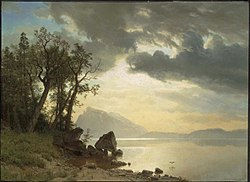Bitter Ambrose Bierce
- Cheryl Anne Stapp

- Sep 27, 2023
- 3 min read

He is still famous for two reasons - his cynicism and distinctive writing style: dark imagery, with so-called “trick endings” in his short stories, leading his contemporaries—and modern scholars alike—to compare his writings with those of Edgar Allen Poe; and for his mysterious disappearance in 1913.
After serving with distinction in several Civil War battles (and being wounded in the head by a Confederate sniper) Ambrose Bierce arrived in San Francisco in 1866, aged 24, as an engineering attaché with General Hazen’s postwar expedition to inspect western military posts. Resigning the army, he determined to become a journalist despite his sketchy formal education.
Taking a job as a night watchman at the United States Branch Mint, he embarked on an intense program of self-education, reading the classics in literature and practicing his writing skills. Before long, he began selling poems, short essays and articles to San Francisco literary journals, bringing him to the attention of Frederick Marriott, whose fledgling weekly the News Letter featured a column called “Town Crier,” which reported satirically on the foibles of the city and its residents. Within a short time, Bierce’s sardonic cleverness in print made him “the wickedest man in Francisco,” and “the man everybody loved to hate.”
Bierce’s barbs had no limit against prominent men or venerable institutions, but he could never successfully belittle the gentler sex in print. Tall and handsome, with wavy blond hair and a full mustache, he was a favorite of the ladies, soon gaining a reputation as a womanizer. In 1871 he married Mary Ellen Day, whose prosperous mining engineer father gave the couple a trip to England as a wedding present.
They stayed in England more than three years, during which time Bierce replicated his success as an American journalist, producing three books, many articles, and acquiring an international reputation as a wordsmith. But on returning to San Francisco, Bierce found the city in the midst of an economic depression. Not only did his old newspaper not rehire him, but the other papers in town showed little interest in his talents. He took a job at the Assay Office of the Mint to support his family, but more and more began habituating the city’s saloons. His health (and marriage) deteriorated, yet he continued to write, with even greater bitterness and black humor, over time compiling what would become The Devil’s Dictionary.
At last, in 1877, a wealthy townsman founded a newspaper called The Argonaut, hiring Bierce as the writer of a column to be called “Prattle.” In this Ambrose was at his wicked best, earning the sobriquet “Bitter Bierce” for his scathing criticisms, and entering his period of peak productivity. He began writing brilliant short stories, the first few published in book form in 1891, which brought him recognition as a writer of great talent. Another book followed in 1893, a collection of 25 short stories, including several that are considered masterpieces of the macabre; and several years later, a collection of 245 fairy tales with satiric twists.
When Bierce was 44, he entered the employ of young William Randolph Hearst, who had taken over the failing San Francisco Examiner. This working partnership lasted more than two decades, until their love-hate relationship ended their association in 1908, when another publisher asked him to assemble and edit a 12-volume set of his writings, titled Collected Works.
By now, however, his estranged wife, two of his three children, his longtime writer friends Mark Twain and Joaquin Miller, had all died, and age was creeping up on him. Perhaps seeking to recapture the excitement of bygone days, he decided to go to war-torn Mexico to join Poncho Villa’s revolutionary forces. In late 1913, age 71, Ambrose Bierce, on horseback, crossed the Mexican border near Juarez, and disappeared without a trace.
Although there are many theories, to this day no one knows what happened to him.




Comments